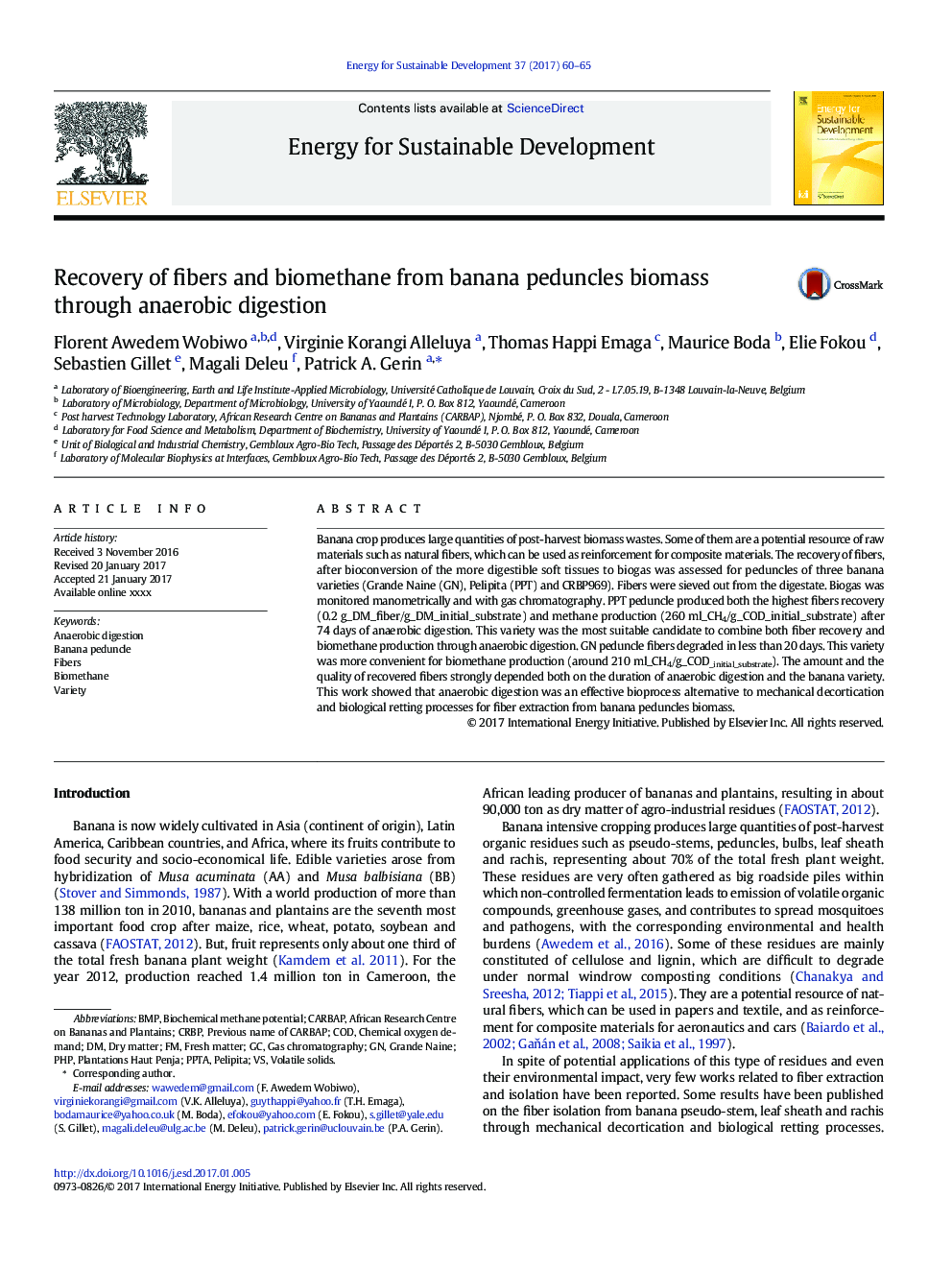| Article ID | Journal | Published Year | Pages | File Type |
|---|---|---|---|---|
| 5114333 | Energy for Sustainable Development | 2017 | 6 Pages |
Abstract
Banana crop produces large quantities of post-harvest biomass wastes. Some of them are a potential resource of raw materials such as natural fibers, which can be used as reinforcement for composite materials. The recovery of fibers, after bioconversion of the more digestible soft tissues to biogas was assessed for peduncles of three banana varieties (Grande Naine (GN), Pelipita (PPT) and CRBP969). Fibers were sieved out from the digestate. Biogas was monitored manometrically and with gas chromatography. PPT peduncle produced both the highest fibers recovery (0.2Â g_DM_fiber/g_DM_initial_substrate) and methane production (260Â ml_CH4/g_COD_initial_substrate) after 74Â days of anaerobic digestion. This variety was the most suitable candidate to combine both fiber recovery and biomethane production through anaerobic digestion. GN peduncle fibers degraded in less than 20Â days. This variety was more convenient for biomethane production (around 210Â ml_CH4/g_COD_initial_substrate). The amount and the quality of recovered fibers strongly depended both on the duration of anaerobic digestion and the banana variety. This work showed that anaerobic digestion was an effective bioprocess alternative to mechanical decortication and biological retting processes for fiber extraction from banana peduncles biomass.
Keywords
Related Topics
Physical Sciences and Engineering
Energy
Energy (General)
Authors
Florent Awedem Wobiwo, Virginie Korangi Alleluya, Thomas Happi Emaga, Maurice Boda, Elie Fokou, Sebastien Gillet, Magali Deleu, Patrick A. Gerin,
